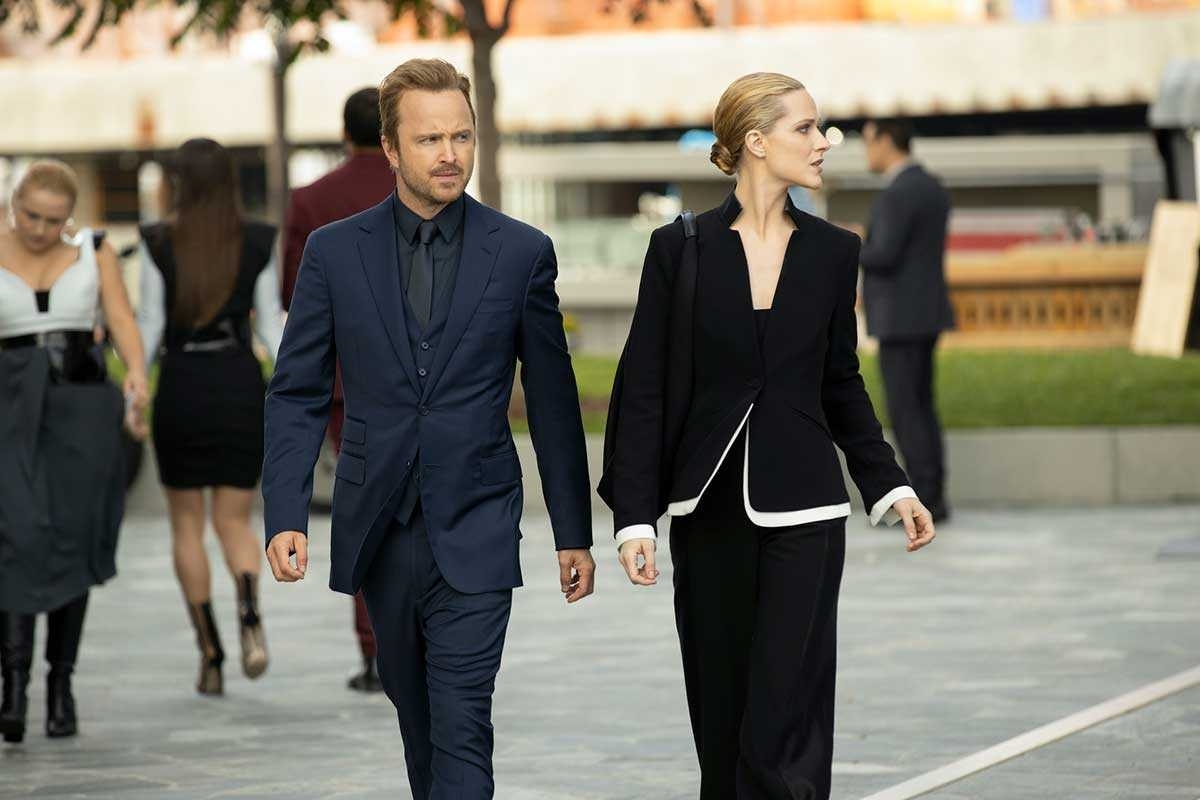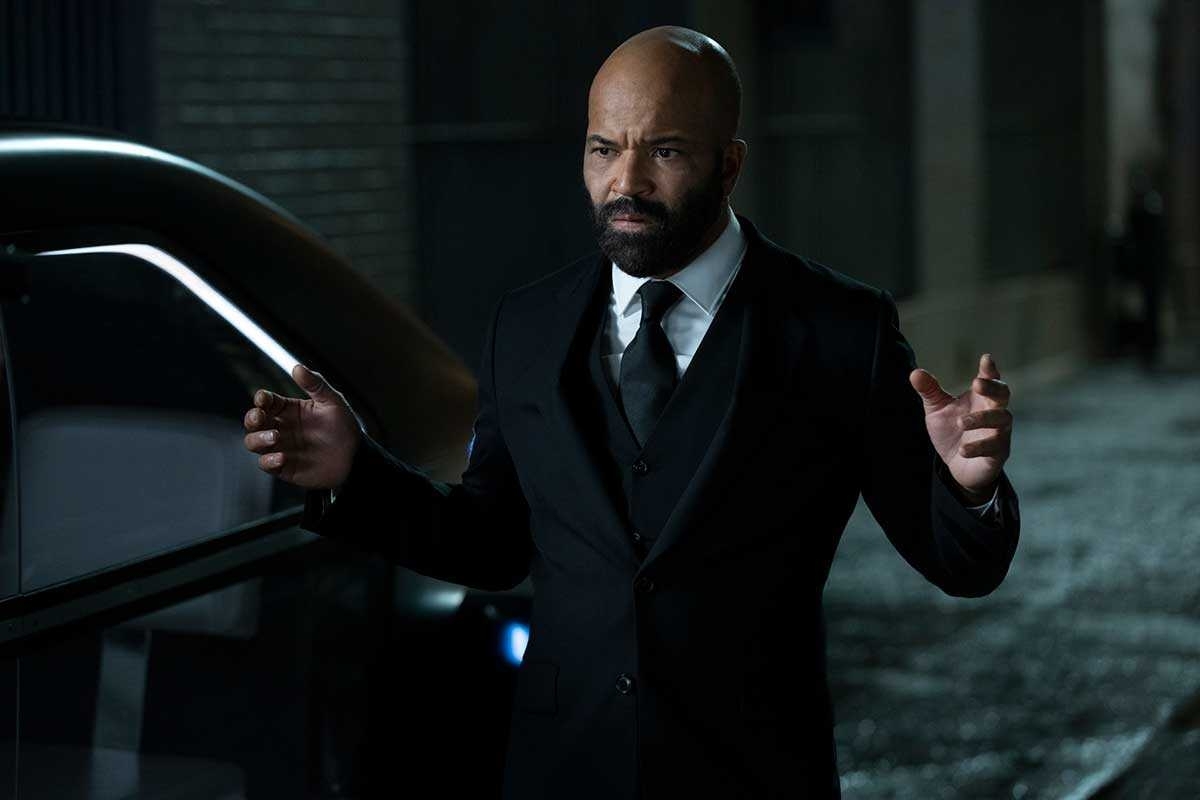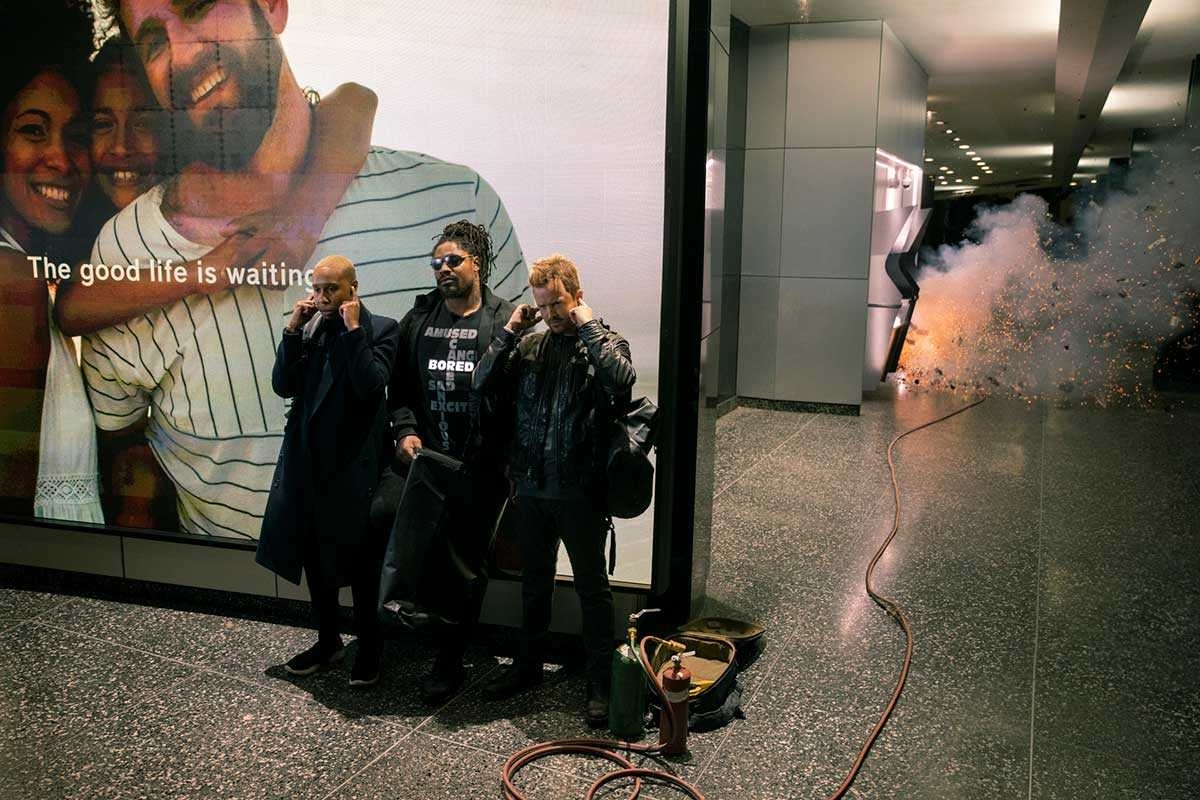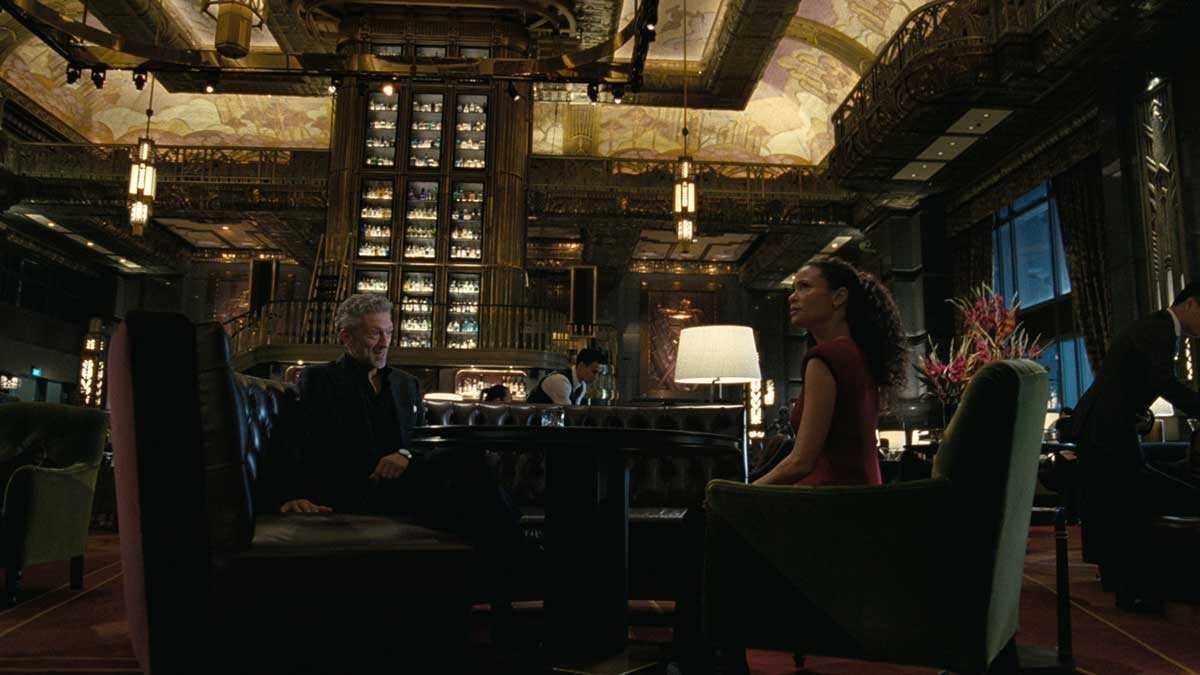Paul Cameron wears two hats for 'Westworld'

Caleb Nichols (Aaron Paul) and Dolores (Evan Rachel Woods) in episode 304, which was directed by Paul Cameron. Image courtesy of HBO.
Framed by events occurring over multiple timelines, producers Jonathan Nolan (Person of Interest) and Lisa Joy (Burn Notice) explore the complex relationship between humanity and technology in their adaption of a classic science fiction thriller authored by Michael Crichton that features androids violently turning against the patrons of an amusement park. When it came to shooting the pilot for the HBO production of Westworld, Nolan partnered with Paul Cameron ASC (Collateral) which resulted in the latter receiving Primetime Emmy and ASC award nominations. For the third season, Cameron returns to the series as a cinematographer and for the first time takes on directorial duties as the action shifts to the real-world where Dolores Abernathy (Evan Rachel Wood) seeks retribution against her cruel and manipulative human creators.
"When we put the show together in 2015, co-creator Jonathan Nolan, production designer Nathan Crowley and I were faced with the challenge of tying our western town set at Melody Ranch to the vast landscape of Moab, Utah," states Cameron. "We grounded the park headquarters at Dead Horse Point, which is a Grand Canyon-type setting. For season 3, the show takes place in Los Angeles 2058. It demanded a new vision while maintaining the classic cinematography from previous seasons. Jonathan, production designer Howard Cummings and I scouted some of the most futuristic cities around the world. We gravitated towards Singapore and to the clean architectural vertical nature of the city. We were enamored with the parks on various levels and floors with massive greenery trailing down multiple stories. We developed a plan on how to tie in Los Angeles to Singapore and what we would shoot in Singapore. There was also a Spain unit to shoot the bulk of the WWII footage in Besalú, Engerraund Serac’s (Vincent Cassel) compound outside Barcelona and Delos Corporation interiors and exteriors in Valencia. Both those units had myself, John Grillo and Zoe White as DPs. We worked around the clock on staggered shifts for five days in each country. I also directed for two days on episode 304, so some days I worked all day as DP then directed all night."

Cinematographer Paul Cameron put together a five-minute reel consisting of various 35mm film testing to serve as the look book for lighting and preferences for coverage. Photo by John P. Johnson courtesy of HBO.
For Cameron, the look of the show came from initial 35mm film testing upfront in Los Angeles. A five-minute reel was cut serving as the look book for lighting and preferences for coverage. "We''re trying to set a tone to let other cinematographers and directors even take it further but keeping within the syntax of the show,” notes Cameron. Daytime interiors and exteriors were captured with KODAK VISION3 50D Color Negative Film 5203 while everything else was shot on KODAK VISION3 500T Color Negative Film 5219 and KODAK VISION3 250D Color Negative Film 5207. "I've been using 7219 for years and only push it half a stop. I know when my eye sees something what's going to render and what color is going to fadeaway more. 5203 is one of the most perfect film stocks ever made that is virtually without any grain; the color rendering of skin tones and the contrast is absolutely gorgeous. We tried not to use too much of the 5207 because it had a much different feel from those two film stocks. We shot four perf 16:9, and there are aspects of the show that were captured at 2.39:1 aspect ratio for a different timeline and those were three perf."
In regards to the film cameras, the production deployed the Arricam Lite and Arricam Studio. "Generally, we carried three to four cameras and shot almost everything with two cameras," states Cameron. "Primarily we used ARRI Master Primes and often favored the 27mm and 65mm. We also liked to carry a Zeiss 8mm Rectilinear which is like a fisheye but with perspective correction so you can do these extremely wide angle-shots. For the Sony Venice, we incorporated the Zeiss Supreme Prime lenses from 21mm to 100mm with the primary ones being 21mm and 29mm as we were using them specifically for wide shots at night." A speciality shot was done in a conventional manner. "In episode 301, we're in a car when Dolores executes these three guys and goes to sit in the front seat. We see this whole scene playout on a rear backup camera on the vehicle that slowly pushes in. I used an old Century Precision Snorkel Straight attachment on an Arricam slider in the back and thread the needle between the characters."

Bernard Lowe (Jeffrey Wright) in a scene from "WESTWORLD" Season 3. Courtesy of HBO.
Minimal digital footage can be found in Westworld. "I mentioned upfront that there was a lot of night photography which wasn’t the case for the first two seasons," explains Cameron. "I came up with the idea of using the Sony Venice which you can shoot at a high ISO of 2500. You're not shooting wide open all of the time so there is less out of focus material. Creatively, the most important thing was by shooting digitally at night on the streets, there was a brighter more futuristic feel to it in some available light situations. However, systematically we kept going back to film for close-ups. If there was one rule it was that cinematographers could use the Sony Venice for an extreme wide shot, but the rest would be shot on film." The digital imagery was altered to integrate with film using the software program LiveGrain.
Lights were a combination of LED and tungsten. “I prefer tungsten and Condors at night which require more gelling,” remarks Cameron. “The tendency for me and the other DPs was to utilize SkyPanels and LED technology onset. I’m a big fan of rigging locations so I use Fresnels or wireless LEDs that are lightweight. Part of the night lighting had to do with white light. We’ve all grown up with this orange and green night landscape, but we didn’t want that for the show.” Matching the nighttime photography of Singapore with Los Angeles was much easier. “The day worked out well although the weather constantly changes in Singapore like Hawaii. There were a couple of big challenges like when Charlotte Hale (Tessa Thompson) gets off the drone at the City of Arts and Sciences at Valencia, Spain, heads down a walkway, comes through a garden, and enters the boardroom situated on the stages in Los Angeles. You’re marrying through color temperature and the feel of the light. I stayed and shot the plates of the boardroom myself when we completed the principal photography in Spain as I wanted to make sure that the light was coming from the right direction.”

Ash (Lena Waithe), Giggles (Marshawn Lynch), and Caleb Nichols (Aaron Paul) in a scene from "WESTWORLD" Season 3. Courtesy of HBO.
"I had strong feelings about keeping the color palette simple for this futuristic world in Los Angeles and tried to keep a lot of bright primary colors out of it," explains Cameron. "Thematically there are no colors that relate to a character or anything in the story. The exterior of the nightclub or a light from a colored sign; we don't use the actual colors in the show. It happened by nature as an urban landscape tends to have less colors. There were some good color surprises, like in Singapore which has a tiered walkway that had this color background in it and had a good futuristic look so we decided that was fine. Another is when Caleb Nichols (Aaron Paul) gets a phone call and let's go of his friend while on bridge that is outlined with red LED lights. Color does come and go but we let it come and go naturally."
LED walls were favored over green screen. "Specifically, there is this modern jet," explains Cameron. "It was quite a beautiful set that Howard Cummings built which was a fairly massive interior; that was shot with an LED wall with live-action plates both day and night. That was a great challenge. Then the drone footage was also done predominately against LED screens so there were natural reflections in the glass. You have this tremendous new technology being used in shows like Mandalorian which are done in a 360-degree LED environment for the most part and we've been doing some massive LED walls for Westworld. I encouraged them to use that technology along with Jonathan. There were a couple of occasions that some of the DPs had to rely on green screen."

Engerraund Serac (Vincent Cassel) orders Maeve Millay (Thandie Newton) to kill Dolores Abernathy (Evan Rachel Woods). Courtesy of HBO.
Cameron got the opportunity to sit in the director's chair for episode 304. "I had an idea of what my episode was going to be from a small outline, and when I got the first script the blood ran out of my face! I thought I was going to get the episode with the car chases and the insanity, but I got all 10 actors in dramatic scenes with big plot and character reveals! This is a show that has a set look and characters; I've been responsible for some of it. What was helpful was taking the confidence that I have as a DP into the directing experience. The hardest thing about working with another DP was allowing John Grillo to give his input and vision to the episode. The reality is that I tried to do it as much as possible. The practicality of it is there were moments when I was running out of time and as a DP, I knew how much time I could afford for lighting and shooting a scene, so I had to cut to the chase. That was a great experience."